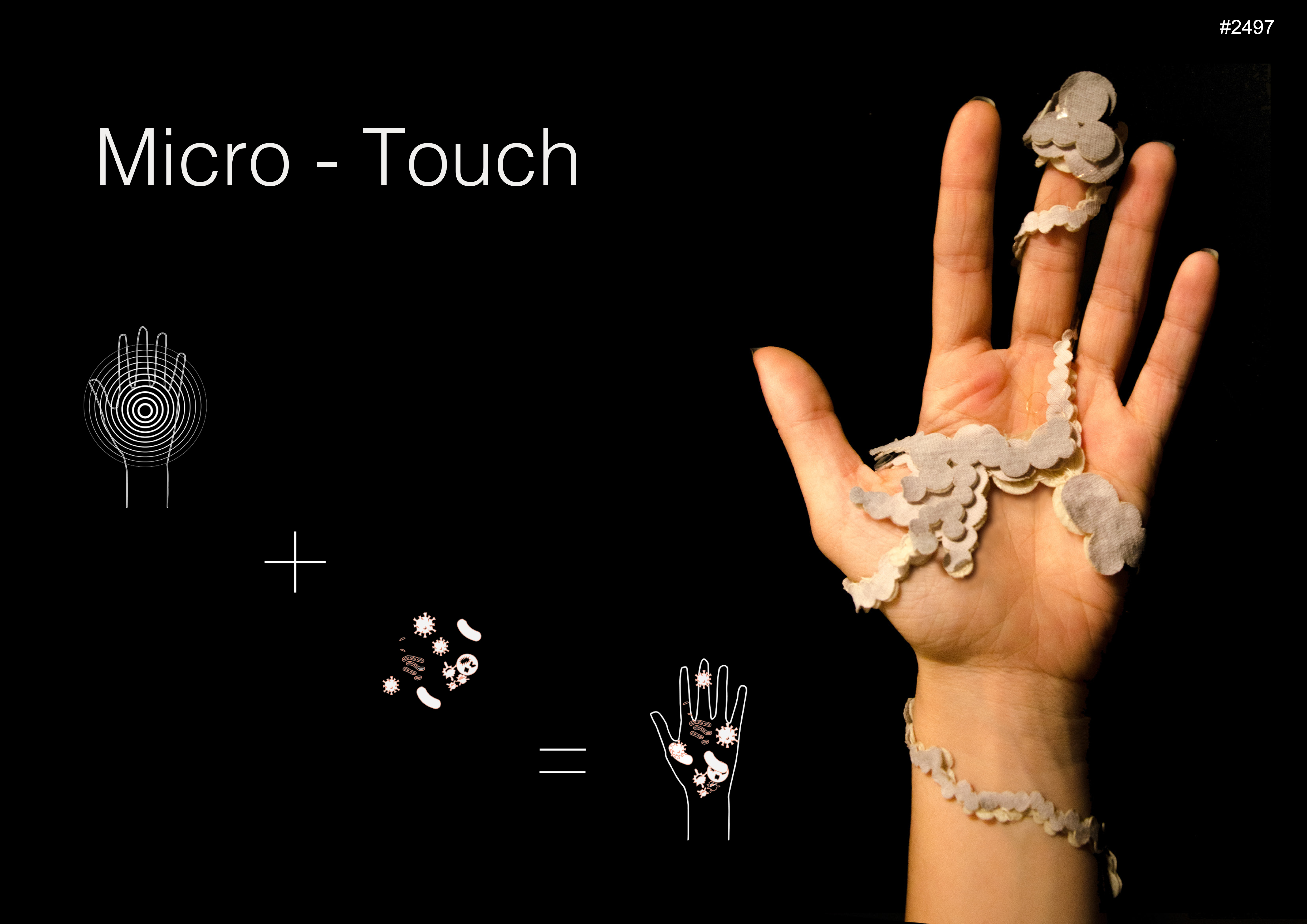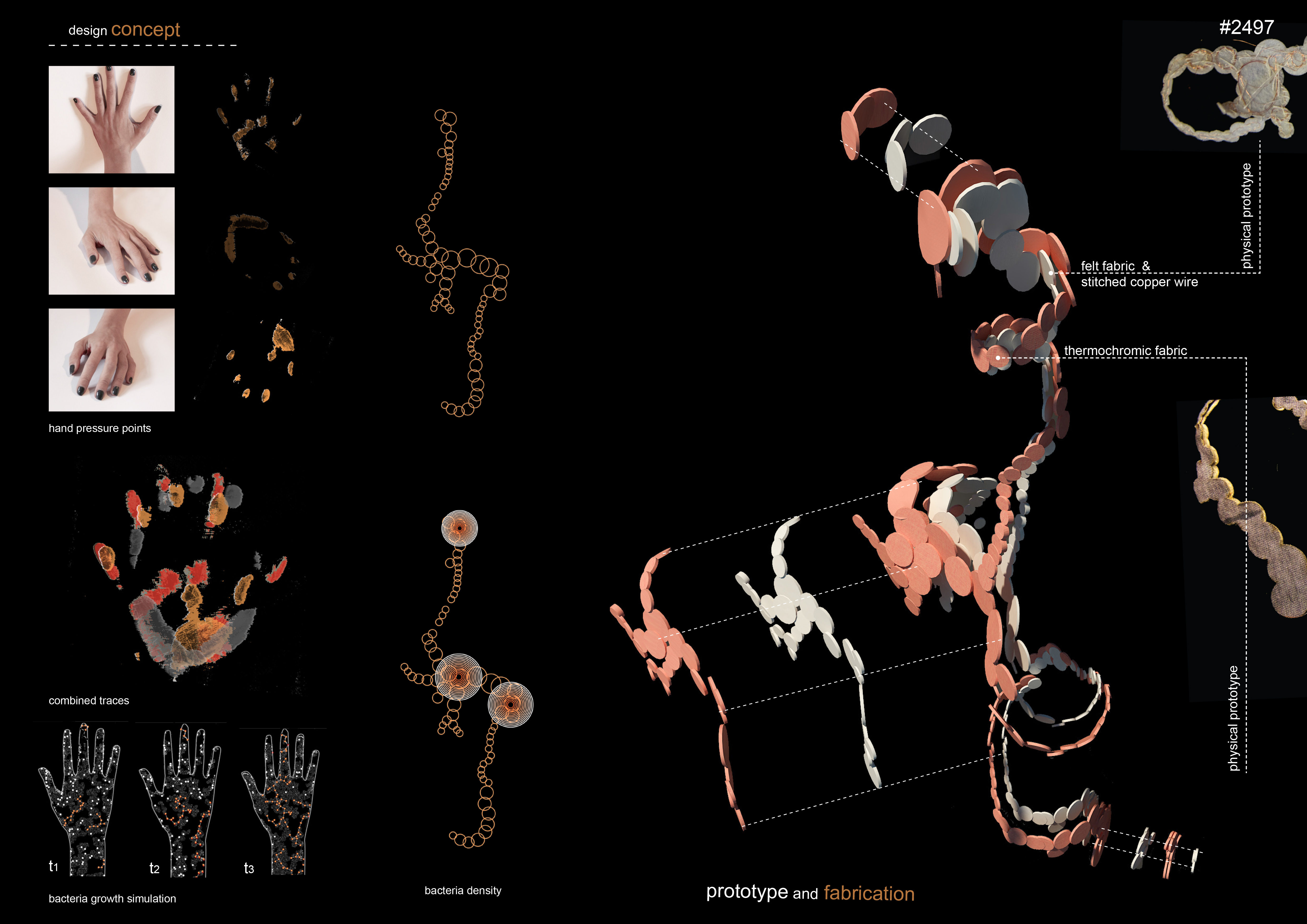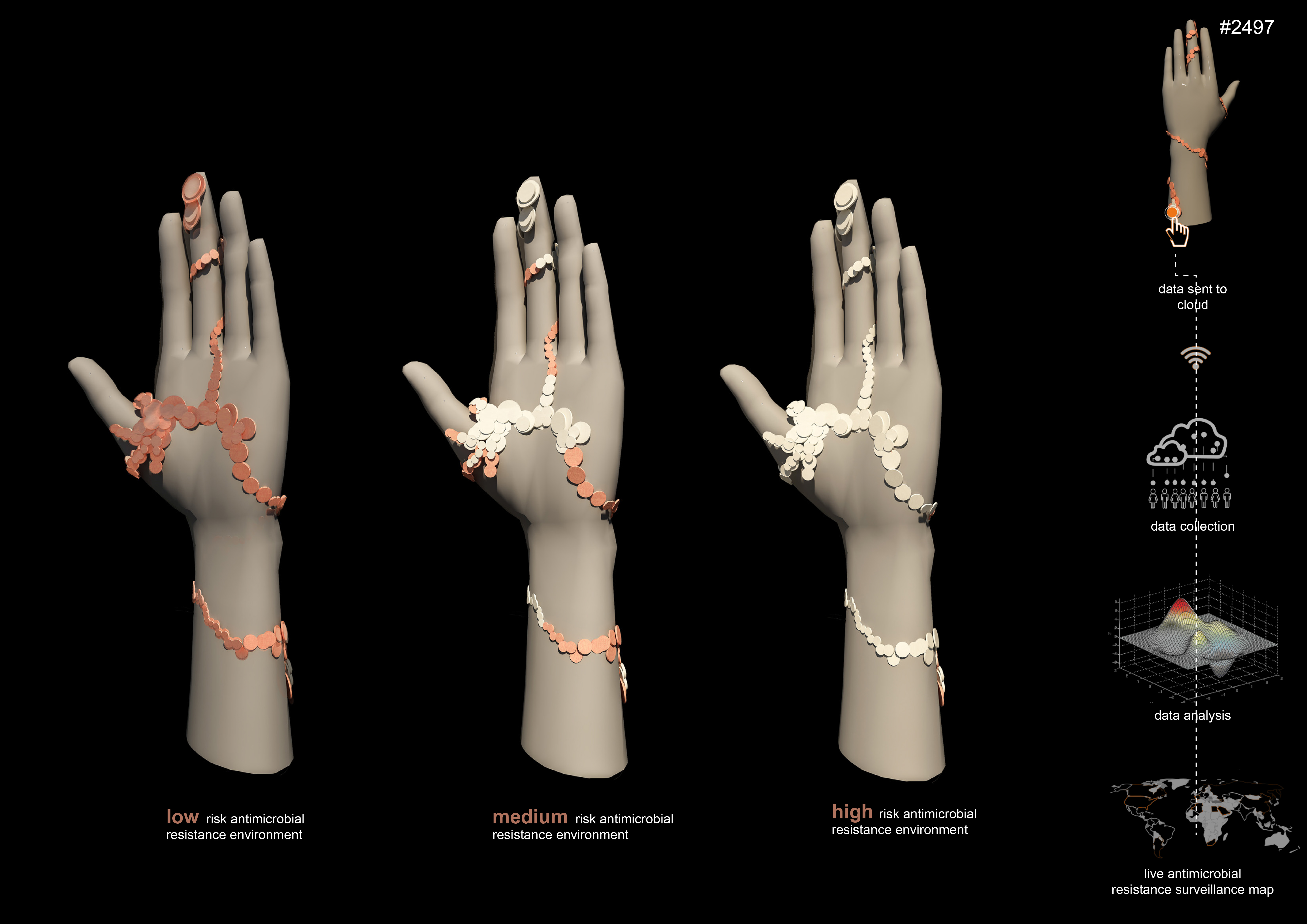#2497
RESHAPE17 | programmable skins
Project Description
Project Detail
Micro- sense
A speculative garment that through touch senses the drug resistance level of germs in an environment is detected. The generated data can be stored and analysed in a cloud system to help track and detect the drug resistance levels of germs globally.
Theoretical background
Antimicrobials are medicines used to treat diseases caused by microbes. Since their discovery in early 20th century they have been overused and as an evolutionary process microbes have reacted by developing resistance. In return diseases caused by these drug resistant microbes can be lethal. Drug resistant microbes can spread through different ways and hands is one of them. Microbes can easily contaminate hands through touched surfaces.
Unfortunately, the drug resistant microbe rates are currently at alarming levels threatening public health. It has been estimated that currently 700,000 people per year die due to drug resistant microbes. Unless, measures taken it is expected to rise to 10,000,000 per year by 2050.
Drug resistant microbes is recognized as a global problem, for which global solutions are required. The World Health Organization has advocated surveillance of microbes to improve our management and develop appropriate health care policies. Steps involved in the surveillance process includes; detection of the microbes, storage of relevant data and analysis to feedback to policy. In this project, data will be generated through humans touching their surroundings that would capture drug resistant microbe levels and upload into a global surveillance system.
The proposal – brief
The aim of this work is to envisage a future where we recognize the ecological members using dynamic real-time data collection and analysis methods. For this we thought touching as one of the most common tasks we as humans perform that directly relates us with our surroundings. This direct action puts us in contact with the microscopic members of ecology.
The proposed wearable is a speculative garment that would sense the level of drug resistance microbes and classify this as low, medium or high risk environment. To achieve this, we assume that a material can be programmed to detect microbes and illustrate this through change in colour to give a direct feeling of the level of risk. This will embed in the self perception of humans as a member of the complex ecological nexus.
We envisage that this information can be translated into informatics through a sensor and microchip embedded in the garment. This would allow the generated information to be gathered into a cloud storage of a global surveillance system. An exciting opportunity would be created to study the microbe world and our interaction. The data would be useful for society by directly feeding into the decision-making process of policies at a global scale.
The design- exploration
The design of the garment was inspired by the bacterial growth on the hands once a surface is touched. For this purpose, the hand pressure points were mapped, for which three pressure points were identified.
A simulation of how bacteria would grow starting from the pressure points onwards was carried out using the design software packages Processing and Grasshopper. Bacterial growth and dissemination paths were obtained from the Magnificent Microbes work conducted by Welcome Trust that illustrates the growth of bacteria on agar plates.
The prototype garment was fabricated using felt fabric, thermochromic fabric and copper wire. Fabric layers were given their shape with a laser cutter. The copper wire was stitched onto the felt fabric layer, which acts as an insulator to the skin. Over this the thermochromic fabric was attached, which actuates when currency passes through the copper wire. Two separate layers for the thermochormic fabric and felt were used. One of them actuates in the medium risk environment and the other in high risk causing complete colour change in the garment.
#2497
MICRO-TOUCH





